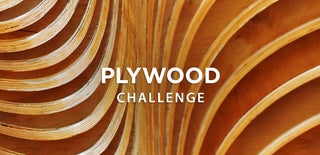Introduction: The Retro-Geek Plywood Box
This project started as a gift for a friend and his newborn baby. I wanted something simple and that could deliver emotions by the simplest way. Colors and light are the best vectors of that, don't you think ?
This is the Retro-Geek plywood Box.
This project is an extension of the Magnetic Watercolor Box, that I've already done, here : https://www.instructables.com/Magnetic-Watercolor-...
Step 1: Supplies and Tools
Tools
- A CNC cutting machine ;
- Endmill bit : Ø 4mm, straight 2 flutes ;
- A soldering iron ;
- 4x Bolts Ø 6mm, lenght : at least 30mm, any type of head ;
- Glue (multi materials) or hot glue ;
- Tea or coffee or Pepsi Max or other product with similar effect.
Supplies
- Plywood, thickness : 15mm ;
- HDF (High density fiber, I use the brand Valchromat) or MDF, thickness : 19mm ;
- Acrylic sheet, thickness : 3mm ;
- An Arduino Nano ;
- A ring of LEDS WS2812 ;
- Electrical wires ;
- 2x potentiometers.
Step 2: 3D Modeling (Fusion 360)
Start by designing your own box on Fusion 360. I leave some screenshots with cotations if you want the exact same box :)
Step 3: Preparing the Cut on Easel
For the CAM step, I use Easel because I'm not yet familiar enough with CAM module of Fusion.
- Easel.inventables.com (free version for me)It's a pretty simple step, but there's some tricks beginners have to know to make a clean gcode file.
From Fusion to Easel : Shaper Origins
In Fusion, I use the extension "Shaper origins" to export SVG files onEasel. Just select the faces of each parts, make sure to select faces surrounding every cut, aka the inside of the compartments, the hollow holes with full depth holes inside, and the offset extrusions. Once all the top faces are exported (note that some parts can be flipped so you have to select the face with the right shapes), import them in Easel.
Settings - Plywood
These settings are for a generic chinese 3018 CNC, with the original spindle.
First, configure your piece of work. For this piece, I use Plywood (thickness : 15mm) and a straight endmill bit (2 flutes, Ø 4mm). My cut settings :
- Feedrate : 800 mm/min
- Plunge rate : 200 mm/min
- Depth per pass : 1 mm
Settings - Acrylic
The settings for the acrylics parts (thickness : 3mm, same bit) :
- Feedrate : 640 mm/min
- Plunge rate : 170 mm/min
- Depth per pass : 0.3 mm
Settings - High Density Fiber (Valchromat)
The settings for the HDF parts (thickness : 8mm, same bit) :
- Feedrate : 1400 mm/min
- Plunge rate : 220 mm/min
- Depth per pass : 1.5 mm
Step 4: Cutting
Preparing the cut
Make sure to hold enough your pieces on the platen. I use double face tape, because it's simple and I don't really like using tabs when cutting, since I don't have yet any tool to remove them properly.
Universal Gcode Sender
Since I have a 3018 from Aliexpress, I can't use Easel to cut directly, I have to export the Gcode and make the cut on the freeware Universal Gcode Sender. It's a good and simple Gcode sender and I prefer it to Grbl. You can download it on the link below :
Easel, go to Machine > Advance >Generate Gcode > Export.
On Universal Gcode Sender :
- Open your port after connecting your usb cable ;
- Set your zero by moving the bit with the buttons, you can use your keyboard if the option is activated ;
- Browse your fresh downloaded gcode file ;
- Visualise it to check that it's the good file (trust me, check it...) ;
- Send your cut ;
- Admire your CNC cutting like you watch your girlfriend / boyfriend / cat sleep at your side.
Step 5: Arduino
The code
I just took the code from : http://arduino.cc/en/Tutorial/AnalogInput
All is in download section, just verify your LED type, the number of LEDS (I use 16 bits), and the LED pin (mine is pin 6).
Wiring
- Pin A0 to Pin data of potentiometer 1
- Pin A3 to Pin data of potentiometer 2
- 5v to VIN of WS2812
- GND to GND of WS2812
- PIN 6 to Data input of WS2812
- GND to GND of potentiometers 1 & 2
- 3v to VIN of poentetiometers 1 & 2
That's all !
Step 6: Assembling
Assemble everything, put some glue below the potentiometer to make everything sticked. You can add a piece a paper between the acrylic sheet and the LEDs if it's too bright for you.
For the buttons, make sure they are sticked to the rotating part of the potentiometers, you can add a little hot glue.
Step 7: Enjoying
Connect The Retro-geek plywood box to a mini USB cable, to any 5v output, and enjoy. You can add any mason jar on it the diffuse mor light.
Use your new LED ambiant lamp box for ambiant lightning, when you chill, when you film something, when you telework, or when you make love ;)

Participated in the
Plywood Challenge












